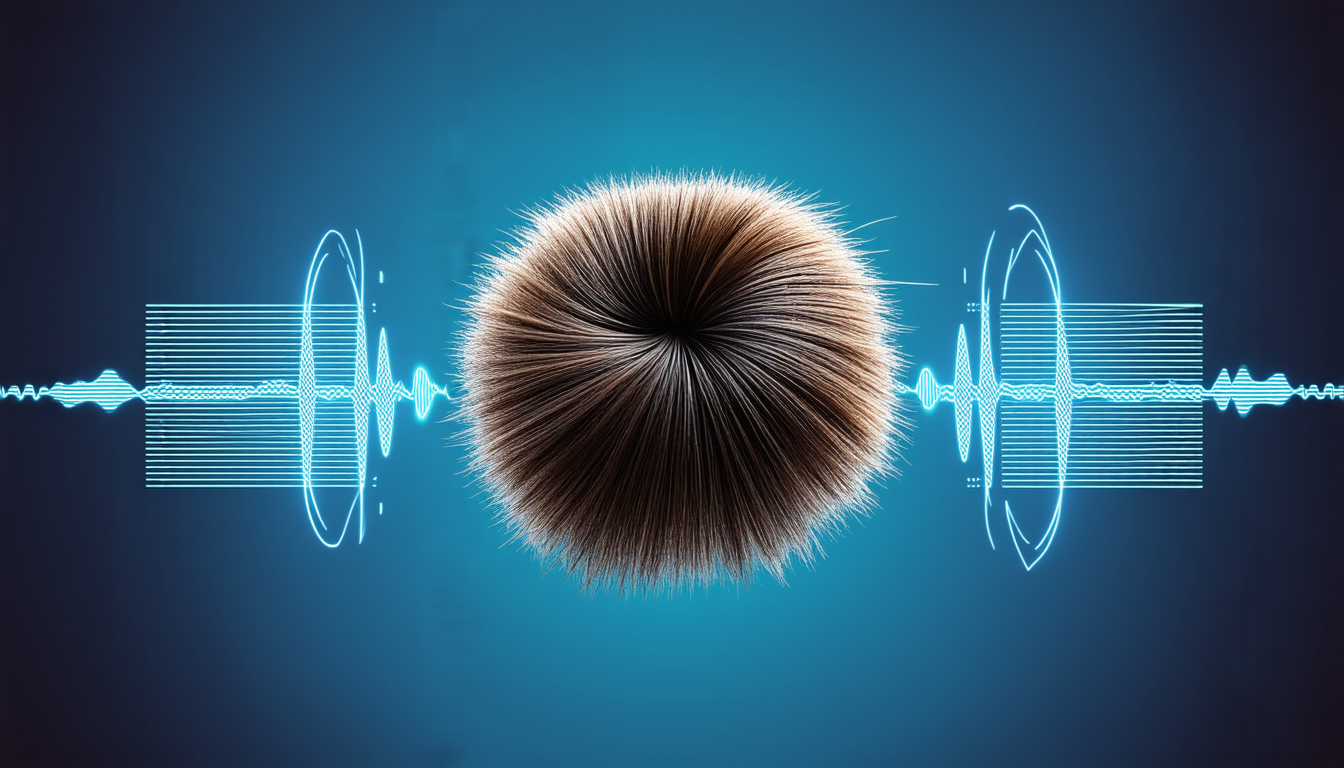Thursday 27 March 2025
The tiny hairs on our inner ear are responsible for our sense of balance and hearing, but they’re also incredibly complex machines. Scientists have long been fascinated by their ability to convert mechanical energy into electrical signals, a process known as active hair-bundle oscillations. Now, researchers have developed a new theory that explains how these tiny hairs can harness energy from outside sources to power their own movements.
The hair bundles are made up of hundreds of tiny hairs called stereocilia, which bend and flex in response to sound waves or vibrations. This bending causes the hairs to release chemical signals that trigger electrical impulses in our brain, allowing us to perceive sound and movement. But how do these delicate structures generate enough energy to power this process?
The answer lies in the way the hair bundles interact with their environment. When a sound wave or vibration hits the bundle, it causes the hairs to bend and flex, releasing chemical signals that trigger electrical impulses. But what happens when the sound wave is strong enough to drive the hair bundles into a state of oscillation? The researchers found that the hair bundles can harness energy from this external stimulus and use it to power their own movements.
This process is known as work transduction, where the hair bundle converts the mechanical energy of the external stimulus into electrical signals. But what’s remarkable about this process is that the hair bundle can also reverse this process, using its own electrical signals to drive its own movements and generate more energy. This means that the hair bundle can act as both a motor and a generator, converting energy from one form to another.
The researchers used computer simulations to model the behavior of the hair bundles and found that they could reproduce the complex patterns of movement observed in real-life experiments. They also discovered that the efficiency of this process varies depending on the frequency and amplitude of the external stimulus.
One of the most fascinating aspects of this research is its potential applications. If scientists can understand how to harness the energy generated by these hair bundles, it could lead to new technologies for generating power. For example, tiny machines that mimic the behavior of these hair bundles could be used to generate electricity from vibrations in the environment.
The researchers also found that the hair bundle’s ability to convert mechanical energy into electrical signals is not limited to sound waves. They discovered that the hair bundle can also respond to other types of stimuli, such as changes in temperature or pressure. This means that these tiny hairs could potentially be used to detect a wide range of environmental cues.
Cite this article: “Harvesting Energy from the Inner Ear: A New Theory on Hair Bundle Oscillations”, The Science Archive, 2025.
Inner Ear, Hair Bundles, Stereocilia, Sound Waves, Vibrations, Mechanical Energy, Electrical Signals, Work Transduction, Motor, Generator







